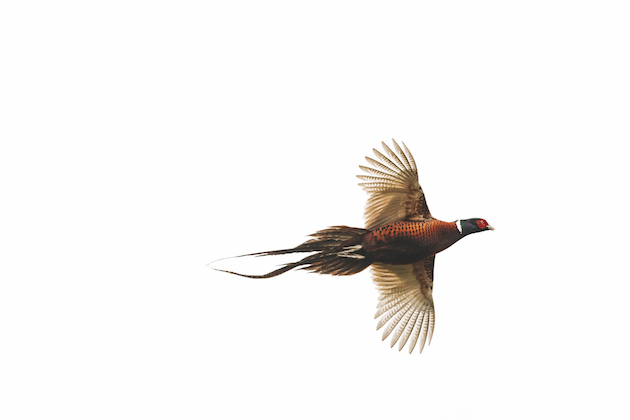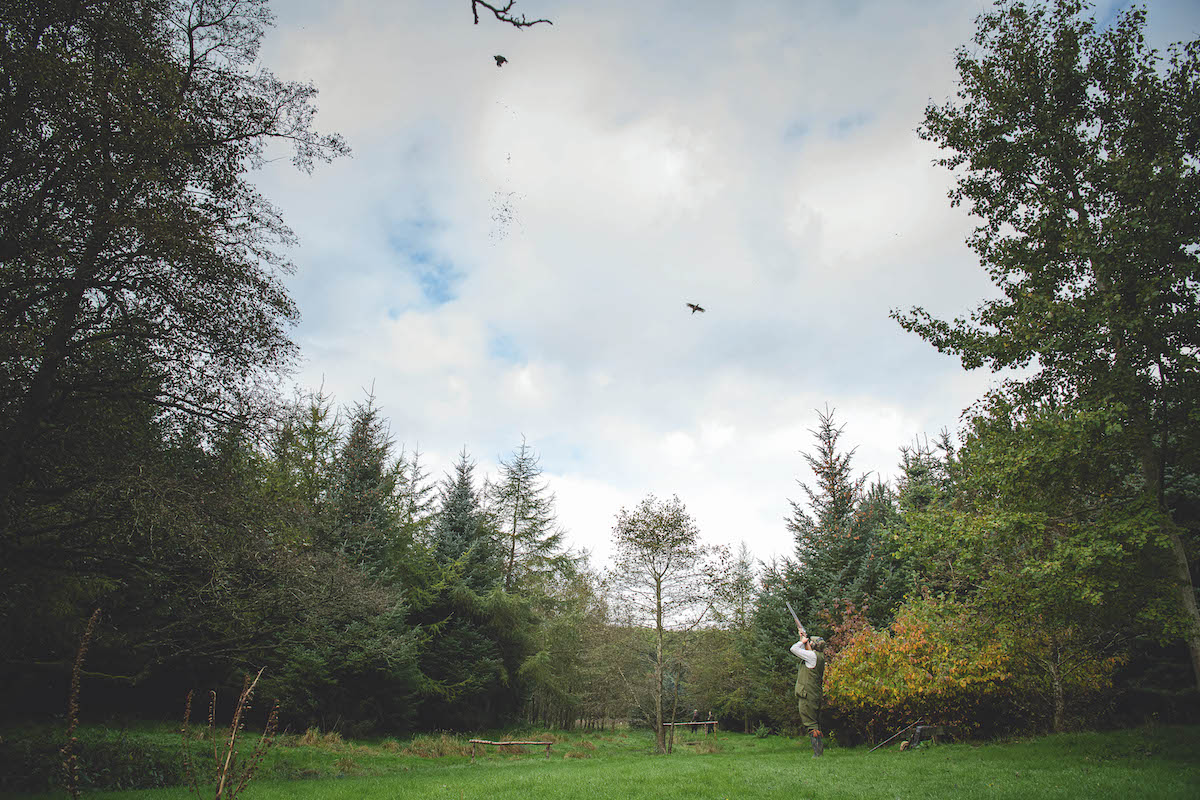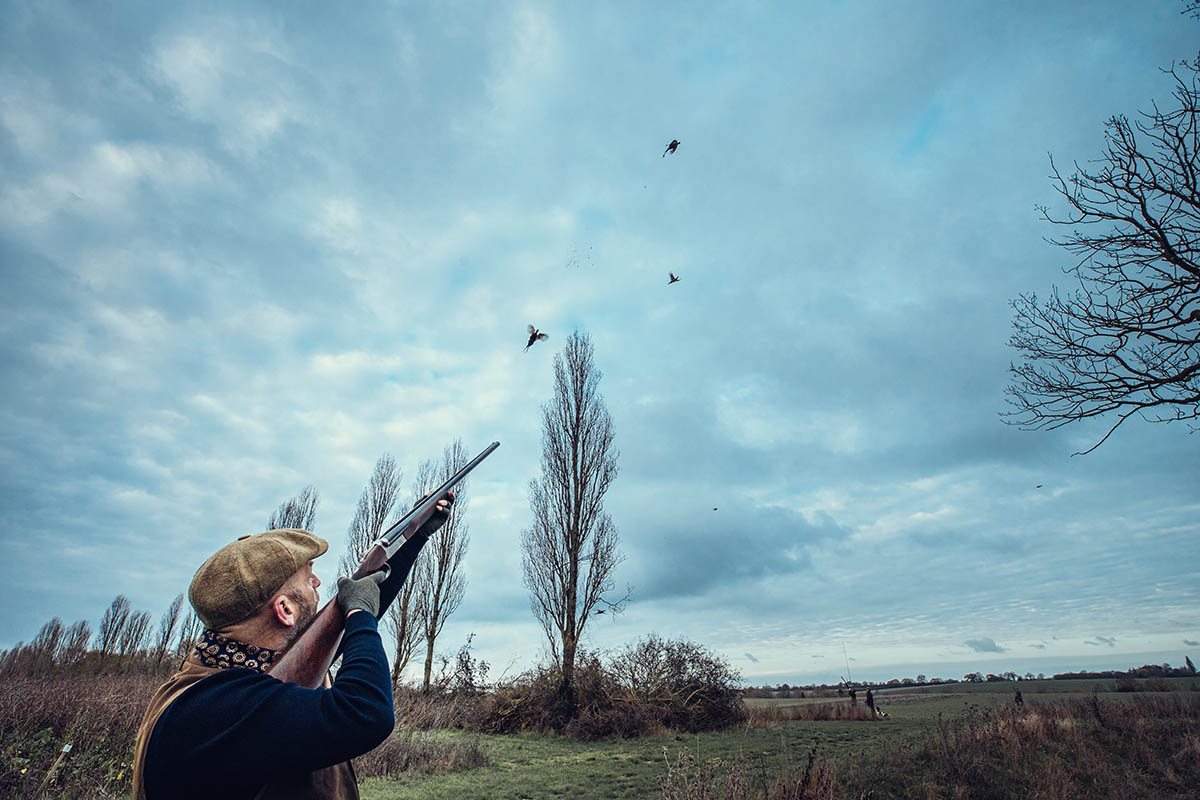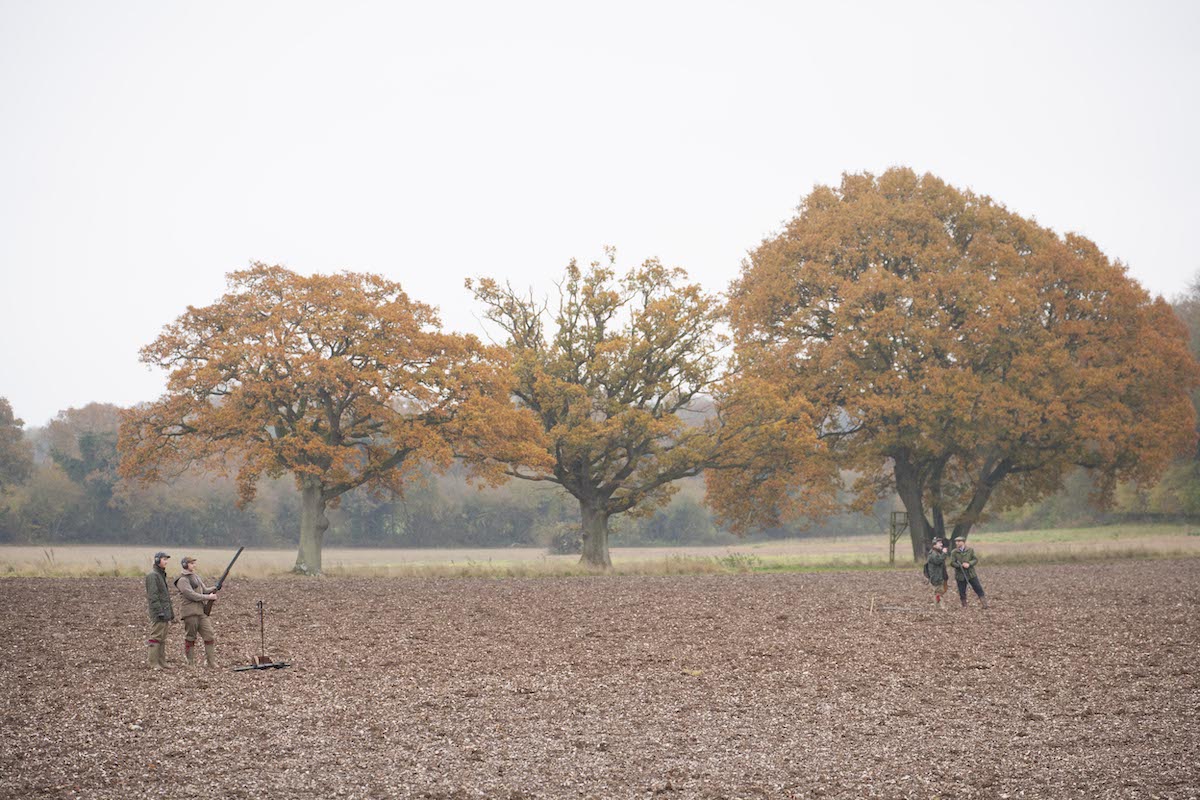Why the wild pheasant is the greatest test
Unpredictable in every way, the wild pheasant will always provide the greatest test, says Ed Wills

’I remember the first time I was invited to a day of wild pheasants. It was a cold January morning and I stood on the edge of an old woodland filled with oaks and ash that sloped away into a deep valley where the other Guns stood waiting, nervously shifting their feet, for the first bird to appear.
My job for the first drive was to shoot any wily old cock pheasants that turned back over the beaters and headed for safety in the trees behind me. The first bird went out to the left and high over the Guns before falling to the second shot. The second followed a right-angle trajectory and made it through to the other side of the valley amid a volley of shots. The third bird had evidently seen what was going on in the valley and made up its mind to take its chances over my head.
Spectacular wild pheasants
It wasn’t the highest bird I have ever seen but this cock pheasant was going like the clappers and its burst of speed made me miss spectacularly with both barrels behind. Another bird left the wood heading towards the Guns in the valley. But suddenly, upon seeing all those men dressed in tweed, it performed a fast 360-degree turn and flew straight over the beaters’ heads.
This unpredictability is the essence of wild pheasants, of those birds that were born and raised on the ground you’re shooting over rather than being put down. Unpredictability, however, comes in many forms. First you have the height. Reared pheasants tend not to have the X factor in this category unless you have a cliff you are pushing them over.
Wild pheasants do not necessarily always claim the top prize in height but they use each situation to their advantage. If they decide that flying low and under the wind is best they will fly like the grouse. However, if they decide that touching the clouds might be the best strategy, then up they go. There is nothing better than watching a wild pheasant decide upon the latter and to stand and admire its rise.

The unpredictability of the wild pheasant will always be a test for both Gun and gamekeeper
Then you have their cautious nature. As these pheasants have been brought up in the wild, as soon as you start firing lead in the air around them, week in and week out, they sensibly become unsettled and look for a new habitat to live in. This is why wild pheasant shooting is such a treat and takes you back to the sport’s roots when you only shot a piece of ground once or twice in a month.
When you did go out, the pheasants would be of sufficient number, happily settled in a quiet and predator-controlled habitat. You would remember that wild bird day over any reared day because of that unpredictability. No two birds ever offer the same shot. They may all fly mysteriously over peg one or perhaps evade peg five’s shot 90 yards up.

Alan Edwards is a wild bird keeper on Bywell estate, which won the Purdey Gold Award in 2017
I asked Alan Edwards, headkeeper at Purdey Gold Award-winning Bywell estate in Northumberland, what he thought about the wild quarry.
“From my early days as a wild bird keeper until today, I am still in awe of a wild pheasant outwitting the waiting Gun,” he mused. “The speed and agility in the air coupled with a bird that can spot danger put a wild one head and shoulders above any reared bird.”
Expert
Holkham is another famous wild bird estate and I was lucky enough to have the opportunity to watch these birds fly over the Guns from a loader/cheerleader’s point of view. I was expecting to see bird after bird rise to considerable height before being dropped by an expert Shot in the line.
However, the wildness of the pheasants became apparent as 50 birds rose as one and turned their beaks towards the woodland behind the flailing orange-and-white flags of the beaters at 30 yards up. Though normal service resumed soon after, with outstandingly high birds being brought down, it was that experience that stuck in my mind.

The sight of a brood of wild pheasants in the spring brings with it a great sense of achievement
Another factor that makes the wild pheasant more appealing to me is that the only cost you will pay is the salary of a gamekeeper to keep the habitat suitable to live in. Gamekeepers are generally thrilled with the task of a wild bird shoot.
“The creation of a wild pheasant shoot has always challenged me,” admitted Alan. “The skill and commitment needed to create the ideal environment in which wild pheasants can be successful takes time and the spin-off benefits to a range of wildlife give me a good feeling about the future.”
Wild pheasants require just as much management as reared ones. Simply because you may be shooting fewer doesn’t mean that the management should be less as well. This is ultimately why wild bird shooting went out of fashion. As demand grew for shooting and more people took up the sport, landowners were forced to make a decision. Should they pay, bring in more birds and shoot more days to cater for the popularity and to even out the extra cost? Or should they stick to the current system and turn people away?
Of course, the latter option soon became ‘the old way’ — but now it is making a resurgence in the age of rewilding as we think about reverting to our roots.
I, too, have been looking back to the roots of the sport and am in the fourth year of a project on my shoot to turn it completely wild. It is situated in Hampshire and I have now reached the point where there are only a couple of reared birds on the several hundred acres of farmland, hedgerow and dotted woodland habitats.
I shot it for the first time this season in the first week of November. The wind was blowing hard and the top gust was recorded at 50mph. This required even more concentration as these pheasants, though wild, were not stupid. Flying out of shelter into a cold northerly wind was not something that they would want to do, so I placed a walking Gun along the edge of the wood for the first drive and, surprise surprise, he had a lovely time.
I was pleasantly surprised to see two coveys of wild grey partridges, each a dozen strong, flying out the left-hand side and evading the ensuing volleys in the wheat field to the right. These partridges are notoriously difficult to manage and it is the second time I have seen them in two years. It is encouraging to think they might have finally decided to settle here.
Wild birds require a lot of time and effort from the keeper but the rewards are greater. The meat of a wild bird is generally healthier than a reared one. It is almost certainly going to be lighter and it won’t have any medication in its system — though, of course, that is not to say all reared pheasants have some kind of medication inside them.
Pheasant is a nutritious, protein-packed meat but wild pheasant is even better. I have yet to put a fried wild breast and a reared breast on a platter and pass them around a dinner party and compile the results for which is tastier. But I would put my money on the wild bird.
Euphoric
Alan put it best when I asked him why he got involved in wild bird estates. “When you see a brood of wild pheasants in spring it’s such a joy, then if you are lucky you can watch them develop into mature birds that thrill the Guns on the first day of the season,” he said. “The feeling of achievement is euphoric.”
It is that sense of achievement you get when you see those first birds fly on the first outing of your season. You never quite know how the day is going to unfold but you relish it all. Trying to outsmart a wild pheasant may seem to be a rather boring affair but, for Alan and me, there is nothing better.
Having spoken to many landowners who are interested in the idea of wild birds and putting it into practice, it might mean that days of a happy past will soon become the days of a hopeful future.









